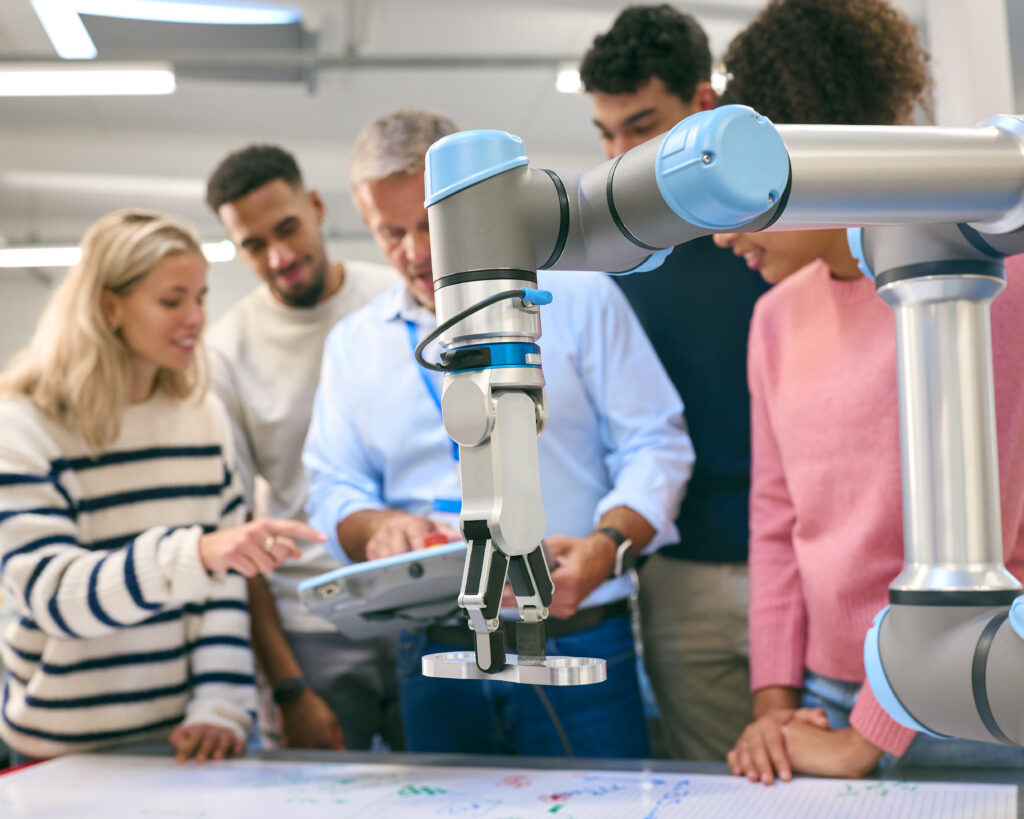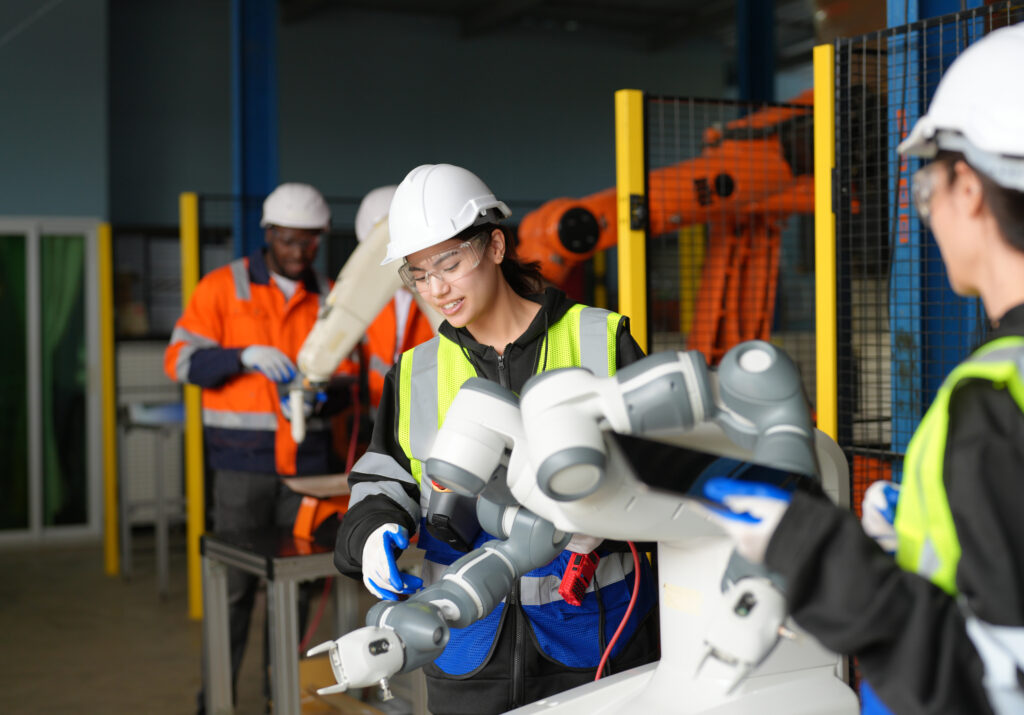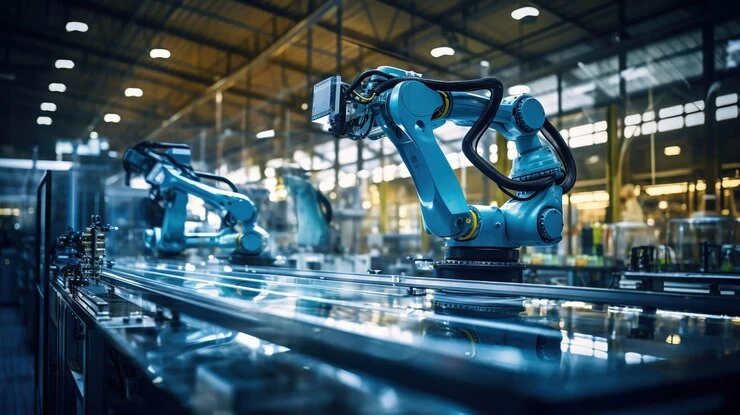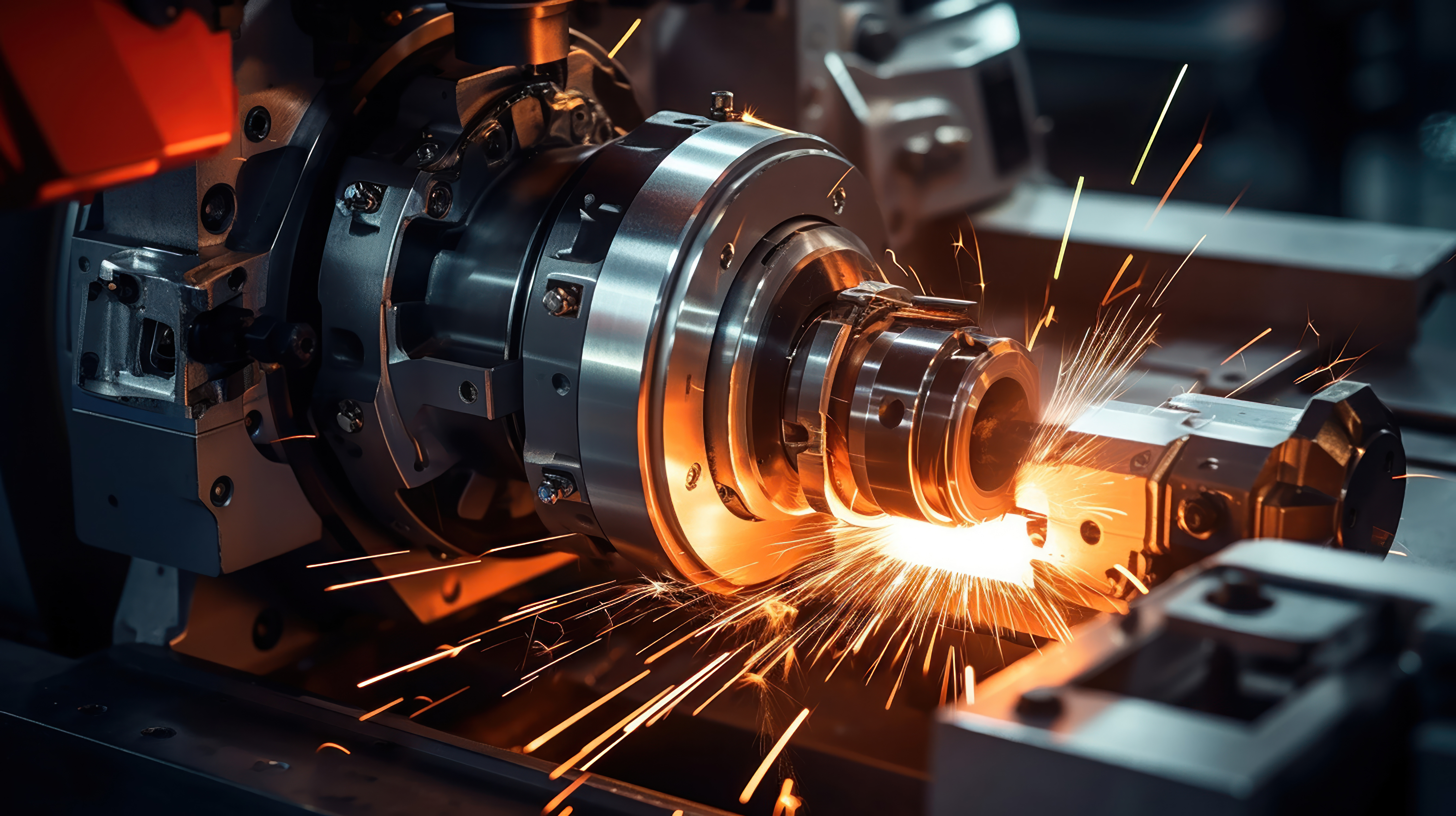
In the dynamic landscape of modern manufacturing, robotics has emerged as a transformative force, revolutionizing production processes and redefining industry standards. With advancements in robotics technology, manufacturers are leveraging automation to drive efficiency, improve quality, and enhance workplace safety. In this blog, we’ll explore how robotics is reshaping manufacturing operations, empowering businesses to achieve new levels of productivity while prioritizing the well-being of their workforce.
The Evolution of Robotics in Manufacturing:
Robotic technology has evolved significantly over the years, transitioning from simple mechanical arms to sophisticated, intelligent systems capable of performing complex tasks with precision and efficiency. In manufacturing, robots are deployed across various stages of the production process, from assembly and welding to packaging and quality control. These robots are equipped with advanced sensors, actuators, and control systems, enabling them to adapt to changing conditions and execute tasks with unparalleled speed and accuracy.
Enhancing Efficiency:
1. Increased Productivity:
Robotics automation enables manufacturers to ramp up production rates while maintaining consistent quality standards. Robots can work around the clock without fatigue or breaks, maximizing throughput and minimizing cycle times. This increased productivity allows manufacturers to meet growing demand and stay competitive in today’s fast-paced market.
2. Streamlined Operations:
By automating repetitive and labor-intensive tasks, robotics streamlines manufacturing operations, reducing inefficiencies and minimizing the risk of errors. Robots excel at tasks that require precision and consistency, such as welding, painting, and pick-and-place operations. By offloading these tasks to robots, manufacturers can free up human workers to focus on more complex and value-added activities.
3. Flexibility and Adaptability:
Modern robotics systems are designed to be flexible and adaptable, allowing manufacturers to quickly reconfigure production lines to accommodate changes in product specifications or demand. Collaborative robots, or “cobots,” are equipped with sensors and safety features that enable them to work alongside human operators safely. This flexibility enables manufacturers to optimize production workflows and respond swiftly to market fluctuations and customer preferences.
Ensuring Safety:

1. Improved Workplace Safety:
Robotic automation plays a critical role in enhancing workplace safety by reducing the risk of accidents and injuries associated with hazardous tasks. Robots can handle tasks in high-temperature environments, confined spaces, and other hazardous conditions that may pose risks to human workers. By delegating these tasks to robots, manufacturers can create safer working environments and protect their workforce from harm.
2. Ergonomic Benefits:
Robotic automation can also improve ergonomic conditions for workers by eliminating repetitive motions and heavy lifting. Collaborative robots are designed to interact safely with human operators, allowing them to share tasks and collaborate effectively. By reducing physical strain and fatigue, robotics technology contributes to employee well-being and reduces the risk of musculoskeletal injuries.
3. Compliance with Regulations:
Robotics in manufacturing helps companies comply with stringent safety regulations and standards governing workplace safety. By implementing robotics automation, manufacturers can ensure that their operations meet regulatory requirements and adhere to industry best practices. This proactive approach to safety not only protects workers but also helps companies avoid costly fines and penalties associated with non-compliance.
Future Outlook:
As robotics technology continues to advance, the role of robotics in manufacturing will only grow in significance. Innovations such as artificial intelligence, machine learning, and advanced sensing technologies will further enhance the capabilities of robots, enabling them to perform increasingly complex tasks with autonomy and intelligence. Moreover, collaborative robots will play a pivotal role in facilitating human-robot collaboration and enabling flexible, adaptive manufacturing systems.
Conclusion:
In conclusion, robotics automation is revolutionizing manufacturing operations, driving efficiency, and improving workplace safety. By leveraging robotics technology, manufacturers can achieve higher levels of productivity, quality, and agility while creating safer working environments for their employees. As robotics continues to evolve, it will empower manufacturers to overcome challenges, seize opportunities, and thrive in an increasingly competitive global market. By embracing robotics automation, manufacturers can unlock new possibilities and embark on a path towards sustainable growth and success.






